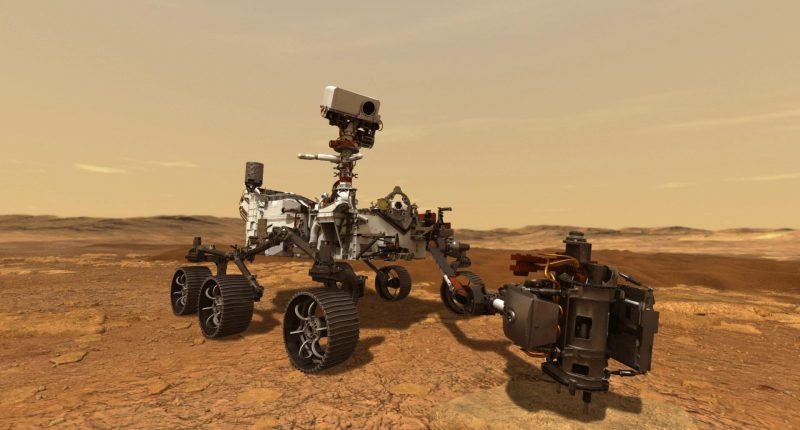NASA’s Perseverance Mars Rover has been on the Red Planet for quite some time as humanity seeks to unlock the mystery of our neighboring planet and whether it hosted life at a time. The rover, earlier this year, landed on the Jezero crater and continued on its mission. Today’s discovery, however, might be a breakthrough in that direction, as it has seen something “no one’s ever seen.”
Since October 25, the rover has been investigating some rock outcrops present in Mars’ South Séítah region and has managed to drill a hole on the Martian surface to reveal something that has eluded human eyes to date, but no more.
NASA took to Twitter to share the development. “Peering inside to look at something no one’s ever seen. I’ve abraded a small patch of this rock to remove the surface layer and get a look underneath,” read the post from the official handle of NASA’s Perseverance. It added that it was already zeroing in on its next target for sampling Mars. Under the top layer were what appear to be grainy minerals and sediments.
The rover managed to drill the hole with the help of an abrading tool attached to its robotic arm, which helps it to scrape away at rock layers. The images of the scratched surface were then sent back to Earth, raising speculations about whether life does exist on Mars. If it does, we are not alone in the universe anymore (as far as we know).
Let us talk about the images shared by the rover, all of which are taken by its Wide Angle Topographic Sensor for Operations and eNgineering (WATSON) camera. In the first image, the rover is abrading the surface of a Martian rock with its equipment. In the second one, there is a circular abrasion made into the rock’s surface and white dust is scattered all around it. The third picture shows the rover zooming in and taking a closer look at the abrasion, where the dust looks like sand. The final image shows the details of the surface beneath the rock, whose texture looks quite different from the rock’s outer surface.
NASA had earlier said that layered rocks often form in water, and could hold clues about what their environment used to be like. “Let’s see if this would be another good place for #SamplingMars.”
The Tech Portal is published by Blue Box Media Private Limited. Our investors have no influence over our reporting. Read our full Ownership and Funding Disclosure →






